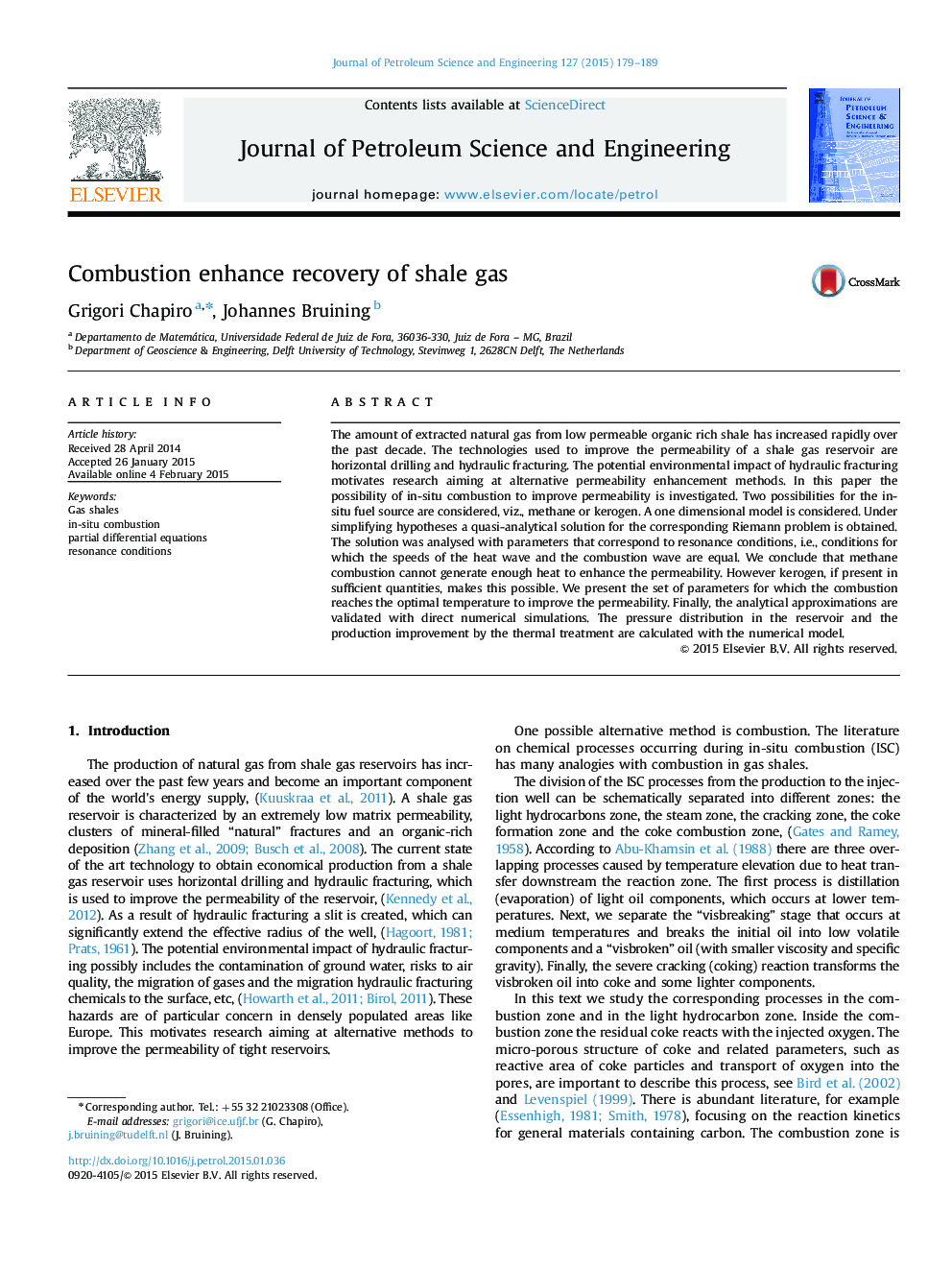| Article ID | Journal | Published Year | Pages | File Type |
|---|---|---|---|---|
| 1754866 | Journal of Petroleum Science and Engineering | 2015 | 11 Pages |
•The paper presents a mathematical analysis and simulation of enhanced shale gas recovery using combustion.•We assume that high temperatures improve the shale permeability permanently.•Combustion of methane does not improve the permeability significantly.•Combustion of the in-situ kerogen, however, can improve the permeability.
The amount of extracted natural gas from low permeable organic rich shale has increased rapidly over the past decade. The technologies used to improve the permeability of a shale gas reservoir are horizontal drilling and hydraulic fracturing. The potential environmental impact of hydraulic fracturing motivates research aiming at alternative permeability enhancement methods. In this paper the possibility of in-situ combustion to improve permeability is investigated. Two possibilities for the in-situ fuel source are considered, viz., methane or kerogen. A one dimensional model is considered. Under simplifying hypotheses a quasi-analytical solution for the corresponding Riemann problem is obtained. The solution was analysed with parameters that correspond to resonance conditions, i.e., conditions for which the speeds of the heat wave and the combustion wave are equal. We conclude that methane combustion cannot generate enough heat to enhance the permeability. However kerogen, if present in sufficient quantities, makes this possible. We present the set of parameters for which the combustion reaches the optimal temperature to improve the permeability. Finally, the analytical approximations are validated with direct numerical simulations. The pressure distribution in the reservoir and the production improvement by the thermal treatment are calculated with the numerical model.
